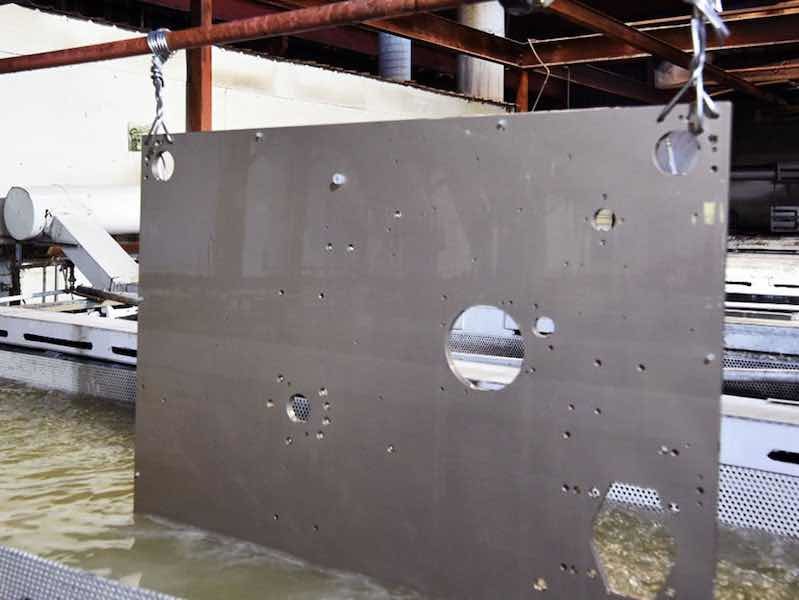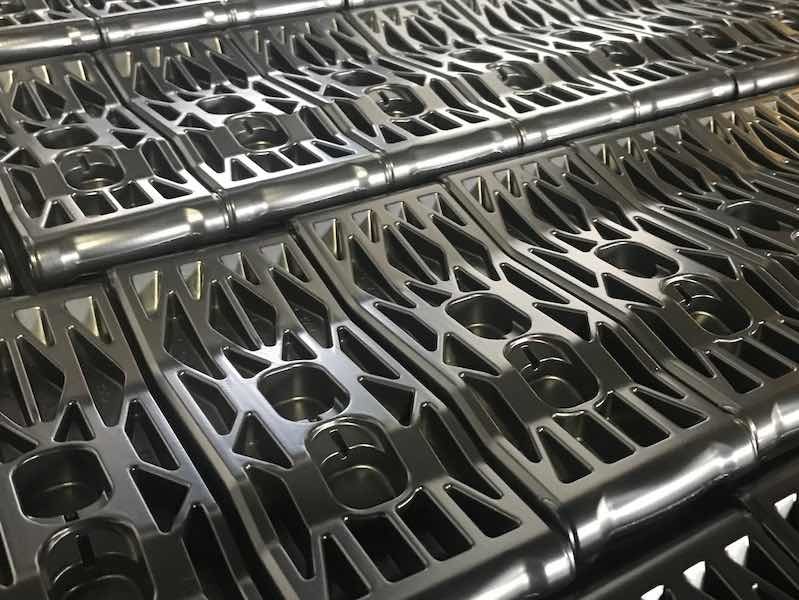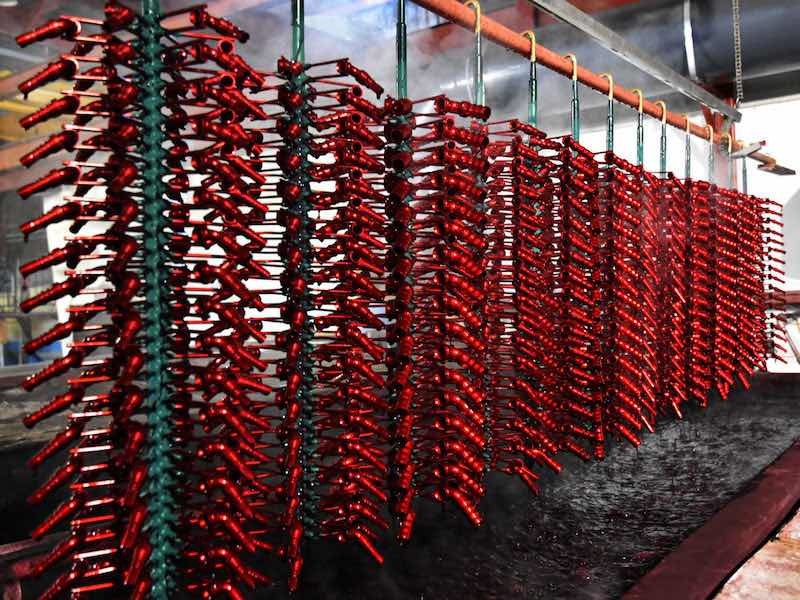Shipping parts from manufacturers to be finished or coated and then sent back to the OEM can be time-consuming and costly.
And driving them around the busy highways of Southern California can be even more expensive, where traffic is maddening and even short trips seem like they can take half a day.
This is why Anodizing Industries in Los Angeles tries to be a jack-of-all-trades to manufacturers when it comes to finishing parts. The company is part of an organization that includes Pemaco Plating and Trans Chem Coatings, which offer additional services and processes to customers who want to streamline their finishing needs.
5 Facilities Located Within 3 Miles
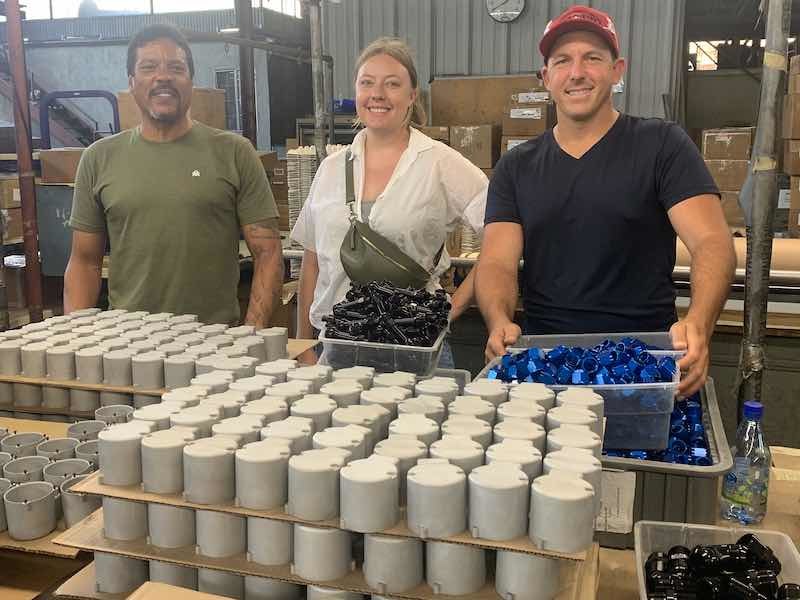 Stephen, Amanda, and Patrick Golling.Patrick Golling, vice president of the family-run organization, says the shops have five total facilities that are all located within three miles of each other with over 50,000 combined square feet of production area.
Stephen, Amanda, and Patrick Golling.Patrick Golling, vice president of the family-run organization, says the shops have five total facilities that are all located within three miles of each other with over 50,000 combined square feet of production area.
“If you analyze the number of times that you touch a part, it doesn’t make sense to send it to one place, get it back, send it to another, get it back, and then send it to another,” Golling says. “It’s beneficial for everyone to send it to one place, get it done there at a one-stop shop, and then bring it back. It can be costly the other way, especially if we’re talking about having to deliver, pick up, or even ship parts.”
The other businesses in the group include:
- Anodizing Industries is a Nadcap-certified facility that offers Type II Mil-A-8625, Type III, hard anodize Mil-A-8625, two-step architectural anodize, die-cast anodizing, and brite dip, passivate QQP35, and chem film Mil-DTL-5541, among others. Its large tanks — measuring up to 13 feet in width — allow for high volume and color consistency, Golling says.
- Pemaco started in 1946 and specializes in smaller plating jobs.Pemaco offers a mechanical finishing department that offers a wide range of services to start the metal plating process. In addition, Pemaco provides wet paint applications in three spray booths, specializing in high-volume paint application, including the application of a Slickote PTFEcoating.
- Transchem Coatings was founded in 1968 and is a manufacturer of military and aerospace primers and coatings. They produce industrial and mil-spec coatings such as polyurethanes, epoxies, alkyds, lacquers, high-heat silicones, and custom product development. Transchem also produces coatings and inks for neon optical glass, thermal, metallic, OEM machinery, corrosion protective, thin film protective, and waterborne primer and paint for metal finishing.
Finishing Out of Necessity
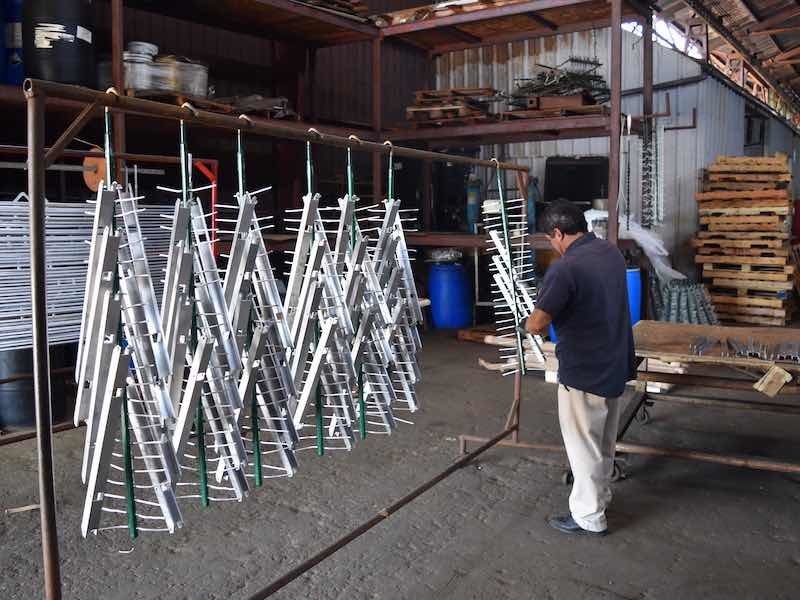 It was Golling’s father, Gene, who got the family started in finishing in 1978 ago. He owned a company that remanufactured Porsche and MG parts, and they became frustrated when the grill they sent out to be finished would take about four to six weeks to come back.
It was Golling’s father, Gene, who got the family started in finishing in 1978 ago. He owned a company that remanufactured Porsche and MG parts, and they became frustrated when the grill they sent out to be finished would take about four to six weeks to come back.
“The anodizer would leave it out in the yard, and by that time, the parts were getting a little corroded,” Patrick says. “And he would say, ‘The anodizer makes all the money. It’s not fair.’ So his business partner at the time said, ‘I can set one up for you. It’s easy.’“
The line was up and running, and soon other manufacturers in the neighborhood began bringing them parts to be anodized. From there, Anodizing Industries was derived out of necessity and convenience.
“At the peak of the old facility in downtown LA, they were running three shifts,” Golling says. “It was 24 hours a day and five days a week, even up to seven at some times. We just outgrew that facility.”
When they found a new building, the shop went from a 5-foot wide anodizing line to 12 feet in width, plus operating with the crane for larger parts. Anodizing Industries also started to add more colors, and the combination of longer tanks and more dyes resulted in better consistency, which allowed them to produce at a higher volume.
“We actually set up another shop down the street as well with smaller tanks,” Golling says. “If the job wasn’t too big, we wanted to be a little more efficient. Then we occupied another building just to house our paint boots.”
Aside from Patrick, his brother, Stephen, is shop foreman at their primary location and oversees all locations. His sister, Amanda, is the office manager based at Pemaco Plating and helps with many administrative areas for Anodizing Industries and Pemaco.
Trying to Keep Everything In-House
 Anodizing Industries have grown into several industries, including automotive, commercial markets, and architectural industries. With more than 70 employees at the location, they have a full masking department; they process chem film as well as silkscreen, bead blasting, and shot peen.
Anodizing Industries have grown into several industries, including automotive, commercial markets, and architectural industries. With more than 70 employees at the location, they have a full masking department; they process chem film as well as silkscreen, bead blasting, and shot peen.
“We try to keep everything in-house,” Golling says. “The only thing we do not have is a powder coating line.”
The company acquired Transchem Coatings in 1999 after working with the previous owners for many years as a customer. Along with the Transchem purchase, they also added a few smaller operations, including Specialty Coatings, WLS, and Slickote Coatings.
A large quantity of the work being done goes through Anodizing Industries to be finished and then brought over to their own paint departments.
Golling says they have three robotic painting systems installed now, two being carousel systems and the other a conveyor line, with more robotic lines planned.
“We are going to be installing two more carousel systems in the next six months or so,” he says. “We have the installs staggered, and the robotic system has really been at the forefront of our painting operations.”
Robots Duplicate Precise Painter Movements
 Golling says they have three robotic painting systems installed now, two being carousel systems and the other a conveyor line, with more robotic lines planned.The robotics from LestaUSA can be used in weightless self-learning mode, where the robot duplicates the precise movements of a painter and repeats them on future parts.
Golling says they have three robotic painting systems installed now, two being carousel systems and the other a conveyor line, with more robotic lines planned.The robotics from LestaUSA can be used in weightless self-learning mode, where the robot duplicates the precise movements of a painter and repeats them on future parts.
In other words, Golling says the painters actually paint the parts first, and they save the pattern of their movement — including the spray pattern — so that the robotic arm can duplicate their actions.
“The painter can take a step back and see how the paint was actually applied. From there, the painter can fine-tune their pattern to increase efficiency,” he says. “Once the desired pattern is set, they can go into the computer and adjust variables such as the speed of the robotic arm and the volume of paint being delivered.”
“With this operation, we’re giving our clients a very calculated approach to cost, turnaround time, and expected output,” Golling says.
The shops are primarily doing automotive parts. They have a large client that does OEM work as well as some aftermarket work. He says they are seeing more OEM work as their program gets bigger.
“We have actually been able to accommodate their large increase in volume over the last 20 years or so that we’ve been working with them,” Golling says. “We take pride in the fact that we can expand based on their needs. It doesn’t take us long because we have a big in-house team. A lot of times, we are a solution for somebody that’s looking to grow.”
Still, the Need for Skilled Painters
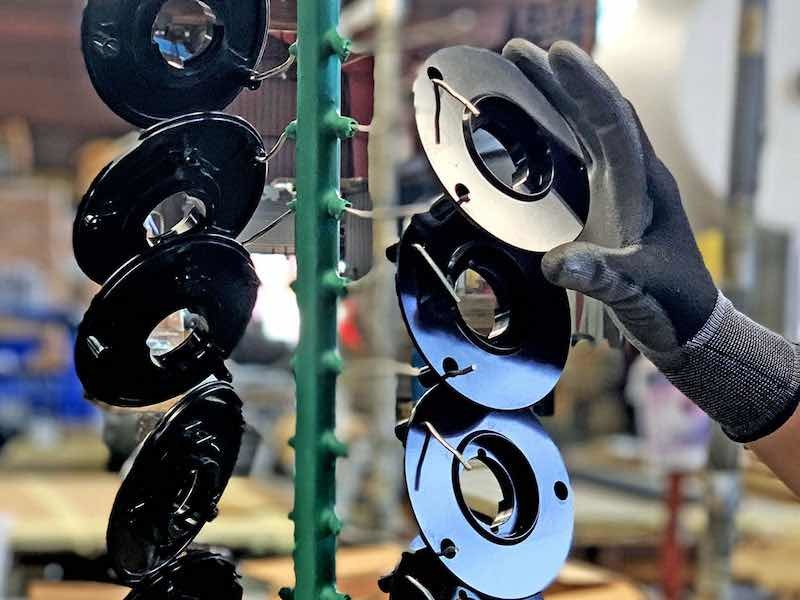 Even though they have robotic paint systems on a few of the booths, the shop still has skilled painters to oversee the coatings and make any adjustments. The shop also includes numerous booths where the skilled painter is spraying. The skilled painters can focus on the challenging and less repetitive parts while allowing the robotic systems to handle the repetitive parts.
Even though they have robotic paint systems on a few of the booths, the shop still has skilled painters to oversee the coatings and make any adjustments. The shop also includes numerous booths where the skilled painter is spraying. The skilled painters can focus on the challenging and less repetitive parts while allowing the robotic systems to handle the repetitive parts.
“The robots cannot operate without a skilled painter being behind them,” Golling says. “But it transitions the job of a painter instead of all day long painting, maybe hurting his shoulder or something. It transitions them to really allow themselves to see the work that they’re doing and take a step back to watch the robotic arm do it instead.”
Having all three application processes — metal finishing, anodizing, and wet paint — all within three miles of each other has been a huge benefit to their customers, as well as to Anodizing Industries, Pemaco, and Transchem Coatings.
“We get large quantities and anodize them, and then we bring them to our own paint departments,” Golling says. “Some areas of the part are a little more difficult for the robot to get to, so we’ll basically allocate parts to whichever facility makes the most sense to finish it correctly.”
Their customers have come to rely on all three operations to handle their parts without having to worry about shipping them around Los Angeles, having them constantly packed and unpacked, and all the headaches that might come from that scenario.
Golling says their largest customer would often come to them with certain needs, and they would give them the opportunity to get equipment that would support their future projects, whether it be bigger chem film tanks or sandblasting machines.
“Just like this robotics system, they were backing up our decision because they know that when we progress, they progress,” he says. “And since they’re going through a growth stage, they understand that there’s always going to be a bottleneck somewhere, and they’ve got their own problems to worry about. We just don’t want to be a bottleneck for anyone.”
Visit https://anodizingindustries.com, https://pemacoplating.com, and https://trans-chem.com.





